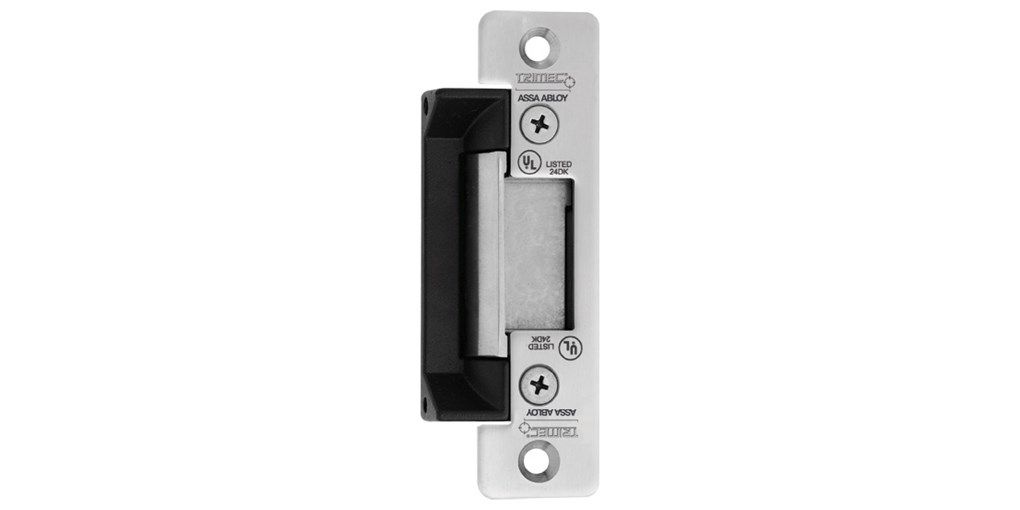
TRIMEC
Electric The humble electric strike has been a major player in the electronic locking hardware field for many years and, with correct specification in the right application, it remains one of the mainstays of electronic locking today.
WHICH STRIKE SHOULD BE USED?
This depends on a number of factors. What level of security is needed? What type of door material is the strike to be fitted to? Single or double door? Is monitoring of the strike required? What power supply unit is to be used in the system? Is the system AC or DC? What else is running off the PSU?Strikes
There are three basic categories.
- Light: normally with no quoted holding force or life. Usually AC and used for low cost door entry systems.
- Medium: Holding force of at least 1,000lb with guarantees of two or three years.
- High: Holding force of at least 3,000lb with guarantees of up to five years. Some are available with UL approval.

Trimec ES100 Series Electric Strike
Contact us

16/F, Excel Centre, 483A Castle Peak Road, Cheung Sha Wan, Kowloon, Hong Kong
Accessories
+11
Custom Key CabinetsDigital Door LockLever HandleExit Device
CylinderWireless LockMechanical LockElectromechanical Lock
HingesDoor AutomationDoor Closer
Phone
Fax
E-mail

Ms. Irene Yip
General Manager
Digital Door Lock
+11
Lever HandleExit DeviceCylinderWireless Lock
Mechanical LockElectromechanical LockHingesDoor Automation
Door CloserCustom Key CabinetsAccessories
Phone
E-mail

Mr. Albert Lam
Senior Project Sales Manager
Accessories
+11
Custom Key CabinetsDigital Door LockLever HandleExit Device
CylinderWireless LockMechanical LockElectromechanical Lock
HingesDoor AutomationDoor Closer
Phone
E-mail

Ms. Tiffany Poon
Sales Director - PEU & Electronic Security
Accessories
+11
Custom Key CabinetsDigital Door LockLever HandleExit Device
CylinderWireless LockMechanical LockElectromechanical Lock
HingesDoor AutomationDoor Closer
Phone
E-mail

Mr. Tim Chow
Senior Regional Specifier, South East Asia
Accessories
+11
Custom Key CabinetsDigital Door LockLever HandleExit Device
CylinderWireless LockMechanical LockElectromechanical Lock
HingesDoor AutomationDoor Closer
Phone
E-mail

Ms. Jacqueline Wong
Senior Architectural Consultant – PEU & Electronic Security
Accessories
+11
Custom Key CabinetsDigital Door LockLever HandleExit Device
CylinderWireless LockMechanical LockElectromechanical Lock
HingesDoor AutomationDoor Closer
Phone
E-mail
